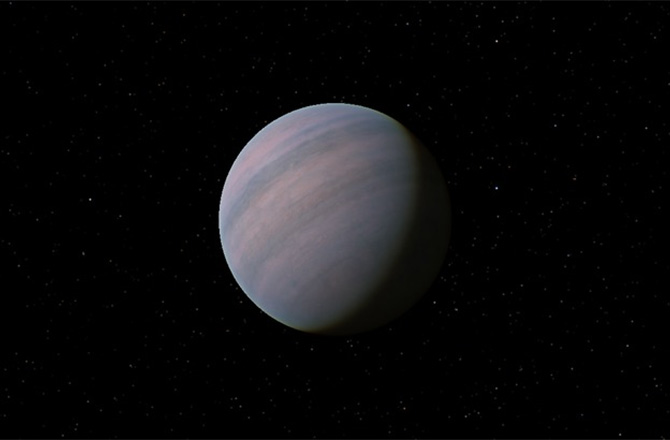chevron_left
-
play_arrow
NGradio So good... like you
Despite having discovered nearly 2,000 alien worlds beyond our solar system, the profound search for exoplanets — a quest focused on finding a true Earth analog — is still in its infancy. It is therefore not surprising that some exoplanet discoveries aren’t discoveries at all; they are in fact just noise in astronomical data sets.
But when disproving the existence of extrasolar planets that have some characteristics similar to Earth, we need to take more care during the analyses of these data, argue astronomers from Queen Mary, University of London and the University of Hertfordshire.
NEWS: Massive Exoplanet Evolved in Extreme 4-Star System
In a paper published by the journal Science last week, the researchers focus on the first exoplanet discovered to orbit a nearby star within its habitable zone.
Revealed in 2009, Gliese 581d hit the headlines as a “super-Earth” that had the potential to support liquid water on its possibly rocky surface. With a mass of around 7 times that of Earth, Gliese 581d would be twice as big with a surface gravity around twice that of Earth. Though extreme, it’s not such a stretch of the imagination that such a world, if it is proven to possess an atmosphere and liquid ocean, that life could take hold.
And the hunt for life-giving alien worlds is, of course, the central motivation for exoplanetary studies.
ANALYSIS: No Alien Signals Detected From Kepler’s New Exoplanet
But the exoplanet signal has been called into doubt.
Gliese 581d’s star, Gliese 581, is a small red dwarf around 20 light-years away. Red dwarfs are known to be tempestuous little stars, often generating violent flaring outbursts and peppered in dark features called starspots. To detect the exoplanet, astronomers measured the very slight frequency shift (Doppler shift) of light from the star — as the world orbits, it exerts a tiny gravitational “tug”, causing the star to wobble. When this periodic wobble is detected, through an astronomical technique known as the “radial velocity method,” a planet may be revealed.
Last year, however, in a publication headed by astronomers at The Pennsylvania State University, astronomers pointed to the star’s activity as an interfering factor that may have imitated the signal from an orbiting planet when in fact, it was just noisy data.
ANALYSIS: Gliese 581g and the Nature of Science
But this conclusion was premature, argues Guillem Anglada-Escudé, of Queen Mary, saying that “one needs to be more careful with these kind of claims.”
“The existence, or not, of GJ 581d is significant because it was the first Earth-like planet discovered in the ‘Goldilocks’-zone around another star and it is a benchmark case for the Doppler technique,” said Anglada-Escudé in a university press release. “There are always discussions among scientists about the ways we interpret data but I’m confident that GJ 581d has been in orbit around Gliese 581 all along. In any case, the strength of their statement was way too strong. If the way to treat the data had been right, then some planet search projects at several ground-based observatories would need to be significantly revised as they are all aiming to detect even smaller planets.”
The upshot is that this new paper challenges the statistical technique used in 2014 to account for the signal being stellar noise — focusing around the presence of starspots in Gliese 581′s photosphere.
ANALYSIS: Chances of Exoplanet Life ‘Impossible’? Or ’100 percent’?
Gliese 581d isn’t the only possible exoplanet that exists around that star — controversy has also been created by another, potentially habitable exoplanet called Gliese 581g. Also originally detected through the wobble of the star, this 3-4 Earth mass world was found to also be in orbit within the habitable zone. But its existence has been the focus of several studies supporting and discounting its presence. Gliese 581 is also home to 3 other confirmed exoplanets, Gliese 581e, b and c.
Currently, observational data suggests Gliese 581g was just noise, but as the continuing debate about Gliese 581d is proving, this is one controversy that will likely keep on rumbling in the scientific journals for some time.
Source: QMUL
Written by: New Generation Radio
Similar posts
ΔΗΜΟΦΙΛΗ ΑΡΘΡΑ
COPYRIGHT 2020. NGRADIO





















Post comments (0)